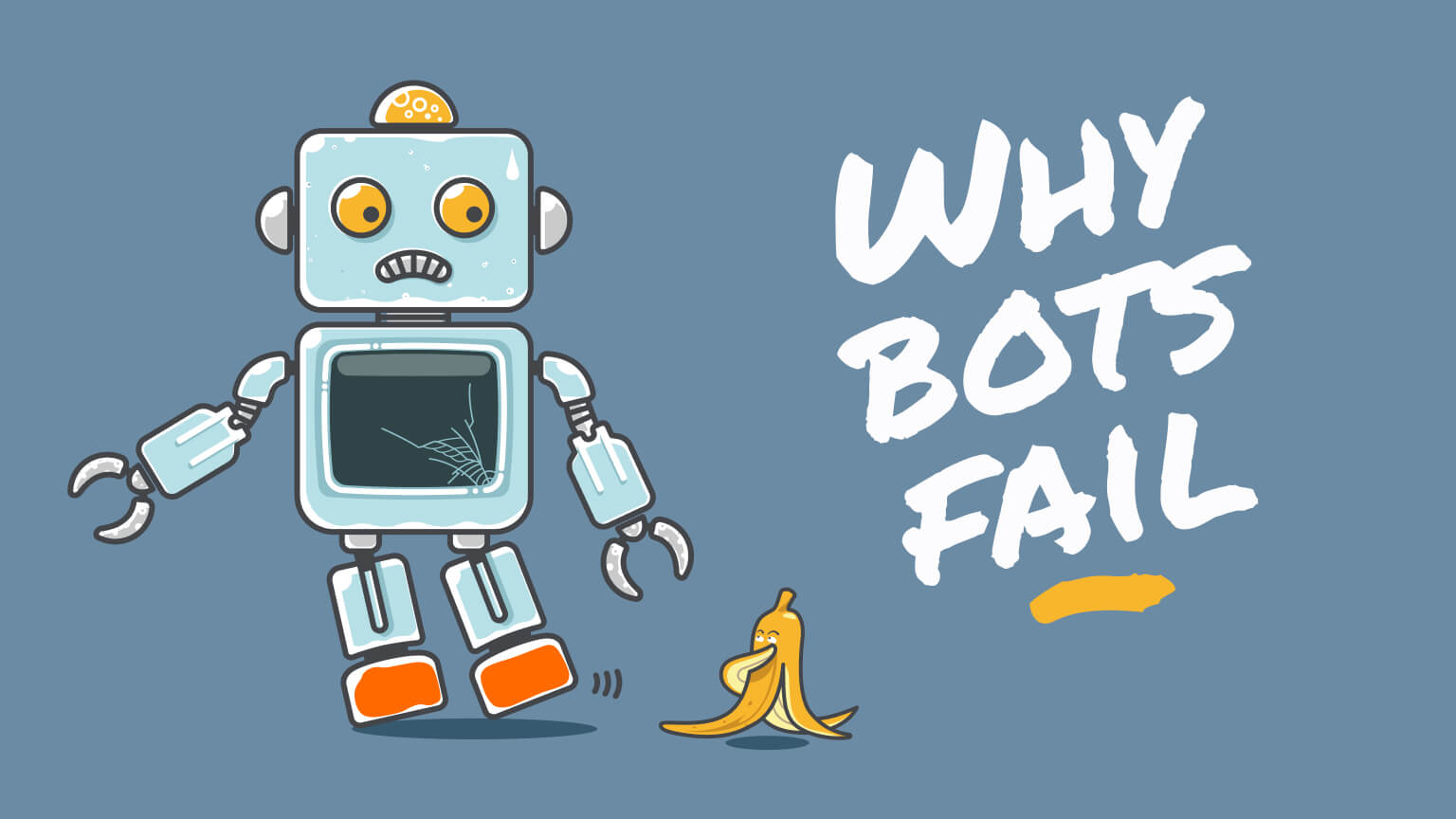article
The top 5 reasons chatbots fail consumers (and what to do about it)
There’s always room for improvement when it comes to building chatbots
May 26, 2021 • 4 minutes

According to LivePerson’s Consumer Preferences for Conversational Commerce survey, 85% of consumers worldwide state that they would like the ability to message with brands.
However, not all chatbots are created equal and there’s always room for improvement. Understanding how a bot misses the mark is the first step in knowing how to fix it, helping avoid frustrated consumers, escalations to human agents, or consumers abandoning conversations and potential sales.
Check out the top 5 reasons bots fail, and what we recommend to make them better.
01: Close but no cigar (the misunderstanding)
Let’s say a consumer asks a chatbot what the weather will be like over the weekend in a specific location. The bot responds with the current weather conditions for that location. The bot understands the ask for the weather and the specific location, but misses the part about the weekend. The consumer asks again about the weekend weather, but because the bot can’t answer, it tries to compensate with humor. And this leads to frustration.
The fix:
The bot designer needs to improve the natural language of the bot so it understands the actual intent of the consumer. This will allow the bot to correctly interpret consumers and their intentions, and provide the right answer up front.
02: How about this instead? (ignoring the question)
When a chatbot is limited, it will ignore the actual question and force a completely different dialogue. For example, a consumer asks a question about a product, and instead of answering, the bot sends a menu of three options in an attempt to overcome the challenge. In essence, the bot has completely ignored the consumer, and is forcing the conversation in a completely different direction.
The fix:
Make sure your chatbots are designed with Natural Language Understanding (NLU) that includes answers to common questions. In addition, bots need to be able to gracefully handle unknown questions. Rather than forcing a consumer down a path they don’t want to go, the bot could transition the conversation to a human agent when it does not know the answer.
03: Around and around we go (the loop)
When a chatbot continues to send the same message regardless of how the consumer responds, the bot gets trapped in a loop. For example, a bot asks a consumer to log in. The consumer responds they aren’t able to log in. But the bot responds with the same message, asking them to log in. The conversation is going around in circles without any satisfactory conclusion.
The fix:
Design the bot to never send the same message twice. Instead, bots should fall back to a secondary message or escalate to a human agent. This avoids the same looping response.

04: Where did you go? (botched transfer)
The biggest advantage of having a chatbot is that it can interact with customers at any time of day or night. But when a bot tries to escalate a conversation at 2AM to a human agent who isn’t there, it can leave the consumer hanging or abruptly end the conversation. Additionally, it sets the wrong expectation with the consumer. They’re expecting to be connected with a person, and that doesn’t happen. This often happens when the system fails to tell the bot early on in the conversation that there are no agents available.
The fix:
The bot needs to be instructed on agent availability early in the conversation and then set proper expectations with the consumer based on that availability.
05: Frustration
All of these chatbot fails usually end in frustration. But sometimes there is consumer frustration even when the bot does what it’s supposed to do. When clear intentions by the consumer are met with seemingly strange responses, that leads to frustration from the consumer. The bot can amplify those frustrations if it doesn’t recognize the emotion and respond accordingly.
The fix:
Chatbots must be designed to identify text indicating consumer frustration so that the bot can take proper action in escalating to a human agent.
The key to all these fixes is good conversational design. A proper conversational design methodology identifies and anticipates consumer needs, reducing the risk of failure and increasing the likelihood of success.

